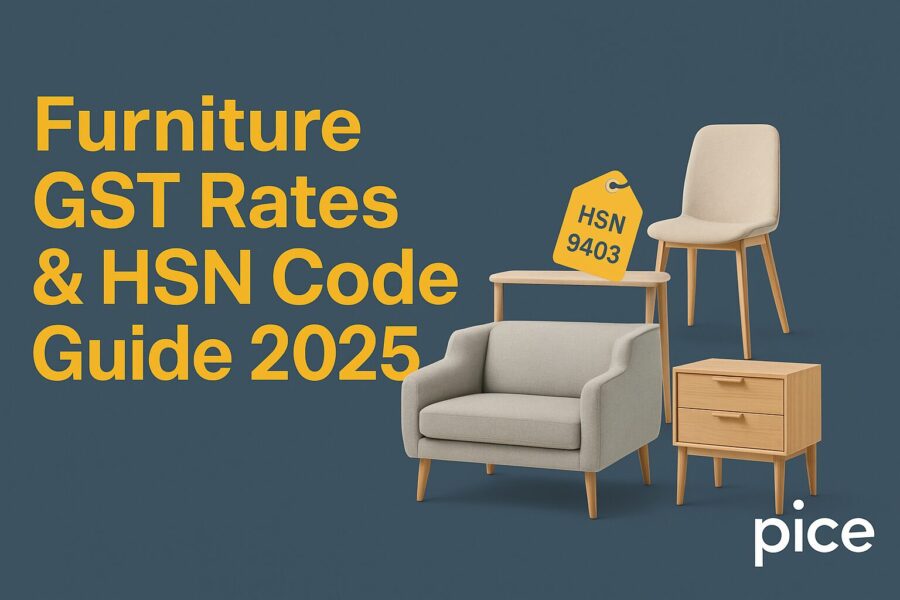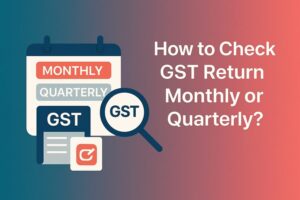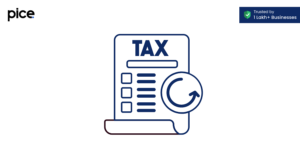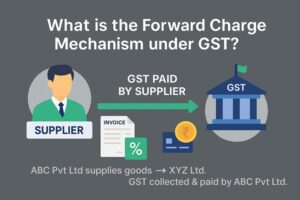Furniture GST Rates & HSN Code Guide 2025
- 13 Nov 25
- 11 mins

Furniture GST Rates & HSN Code Guide 2025
Key Takeaways
- GST on furniture varies by material—wood, metal, plastic, and bamboo—ranging from 5% to 28%.
- Most standard wooden and metal furniture items attract an 18% GST rate, while luxury items fall under 28%.
- HSN codes like 9403, 9404, 9405, and others determine GST classification for different furniture types.
- Input Tax Credit (ITC) benefits under GST have reduced manufacturing costs and eliminated cascading taxes.
- The GST regime brought uniformity, transparency, and simplified taxation compared to the earlier VAT structure.
Did you know that furniture costs vary based on the levied taxes? For example, if you are purchasing a wooden chair worth ₹2,000, including a standard 18% GST rate on furniture, the total cost will be ₹2,360.
Since 2017, the GST (Goods and Services Tax) has had a significant impact on the Indian furniture industry, valued at USD 5.53 billion. It is applied to furniture products ranging from bedding items to lighting fixtures.
Therefore, exploring the nuances of GST on furniture items and their relation to HSN codes is crucial for buyers as well as business owners. Let us explore this significant topic here.
GST Rates on Wooden Furniture
Wooden furniture is considered the most common essential in India. Therefore, the GST Council highlights their affordability when it comes to finalising GST rates.
The GST rate of furniture depends on the materials used. For example, the standard GST rate for wooden furniture is set at 18%, whereas the GST on plywood furniture is 28%.
It is necessary for furniture manufacturers and retailers to know specific GST slabs applied to their products to ensure compliance and accuracy.
Applicable GST Rates for Different Kinds of Wooden Furniture
Here is a list of different GST slabs of wooden furniture and the GST rate:
| GST Slab | Wooden Items |
| NIL (GST exemption) | Charcoal wood, firewood or fuelwood, both agglomerated and non-agglomerated |
| 5% | Wood chip particles, scrap, sawdust, both agglomerated and non-agglomerated in pellets, briquettes, logs, etc |
| 12% | Wood wool, railway or tramway sleepers, packing cases, drums, tool handles, crates, cloth hangers, etc |
| 18% | Sawn wood, wood in the rough, bamboo flooring tiles, kitchenware, tableware, resin-bonded bamboo mat board, etc |
| 28% | Oriented strand board (OSB), plywood, wooden frames for paintings, veneered panels, densified wood, etc. |
HSN Code for Wooden Furniture
The Harmonised System of Nomenclature (HSN) code assists in classifying the goods. The World Customs Organisation (WCO) established this code to arrange goods from all over the world in a rational and standardised manner.
More than 200 countries worldwide utilise this code to classify products uniformly. Under the HSN code 9403, GST on furniture items made of wood is determined.
For example, the HSN code for wooden furniture used in offices is 940330 and for kitchen furniture is 940340.
GST on Steel and Metal Furniture
Since articles made up of steel and metals are more durable, the GST percentage of such furniture is set at 18%. Essential steel and metal furniture such as tables, chairs, office furniture, cabinets and almirahs come under this category.
Specialised metal equipment or customised furniture made with more than one base material comes under a different tax slab. For example, a glass table built with metal legs has a GST of 28%.
Here is a list of different GST slabs of steel and metal furniture and the GST rate:
| GST Rate Slabs | Steel and Metal Furniture |
| 18% | Furniture made out of steel, aluminium, and iron pipes, sheets, such as chairs, tables, cabinets etc. |
| 28% | Luxury metal furniture, such as ready-to-assemble furniture, modular furniture systems, etc |
HSN Code for Metal Furniture
- Similar to wooden furniture, the GST rate on metal and steel furniture also depends on their HSN code, which is 94031010.
- The HSN code for prefabricated buildings, such as greenhouses, and prefabricated housing materials is 9406. These types of furniture are expensive and attract a higher GST rate of 18%.
GST on Plastic Furniture
- The GST rate of furniture made of plastic is 12%. It covers a vast range of plastic furniture items, such as tables, chairs, household items and storage units.
- Depending on the purpose of the furniture and its customisation, the GST rate might differ. For example, plastic furniture with upholstery has an 18% GST rate.
HSN Code for Plastic Furniture
The HSN code for most of the furniture made of plastic is 940370. This code is used for furniture such as plastic chairs, storage units, tables, etc. For surgical and medical equipment, the HSN code is 9402, and the GST rate for this equipment is 18%.
GST on Other Furniture and HSN code
- Except for wooden, plastic and metal furniture, other types of essential furniture, such as mattresses, bedding and cushions, attract a GST rate of 12%. The HSN code for these products is 9404.
- The GST rate for lighting fittings, LED lights, lamps, and various illuminated signs used for decorative purposes is 18%. The HSN code for these articles is 9405.
- Bamboo furniture, such as handmade baskets, stools, and sofa sets, has a 12% GST rate, and the HSN code for these products is 94038200.
- A concessional GST rate is specified for handicraft goods. For products such as handmade carpets, lace and pottery items, the GST is lower, at 5%.
Exemptions and Concessions on Furniture Under GST
Although most of the time, a standard GST rate is levied on furniture, there are certain exemptions and concessions:
- Used Furniture
Usually, second-hand or used furniture is exempt or comes with a reduced GST rate. However, it completely depends on the condition of the article and its resale value.
Earlier, the tax amount of used furniture varied from one Indian state to another. However, since the GST implementation, a standard rate of 18% GST is levied.
- Furniture Exports
Exported furniture from India does not have a GST rate. Furthermore, exporters have the authority to ask for an ITC (Input Tax Credit) refund. ITC refers to the tax amount paid during the production process of exported furniture.
Government Schemes and Incentives for Furniture
Some small-scale manufacturers receive subsidies and tax incentives from various Government schemes. Furthermore, when importers utilise imported raw materials to manufacture a piece of furniture, they receive customs duty concessions. These concessions reduce the cost of the final product significantly.
How GST Changed Furniture Taxation: A Pre and Post-GST Analysis
The GST implementation has changed the taxation system of the furniture industry completely. Here is how:
Pre-GST Era Tax on Furniture
In the pre-GST era, the Value Added Tax (VAT) regime was followed to govern the furniture industry. As a consequence, every state within India followed a different tax filing structure and increased complexity.
Both the retailers and small business manufacturers faced challenges due to the cascading effect of taxes. It forced the consumers to pay more.
Example of Pre-GST Scenario
Let us understand the scenario with an example:
If the selling price of a product was at: ₹7,000
VAT percentage on that selling price was at: 12.5% (₹875)
(Assuming) Input VAT credit on raw materials: 5% (₹100)
Net Tax Liability: ₹775
Post-GST Era Tax on Furniture
With the GST implementation, uniformity emerged in the tax structure. The following changes have come:
- Most of the furniture materials now have a 12% tax levied.
- Manufacturers and dealers claim credits on input taxes. It leads to cost savings.
- A simplified tax structure has increased compliance for businesses.
Example of Post-GST Scenario (hypothetical)
Let us now understand the post-GST tax structure with an example:
If the selling price of a product is at: ₹7,000
GST on that selling price would be at: 12% (₹840)
(Assuming) ITC (Input Tax Credit) on raw materials, 18% GST on wood: ₹360
Net GST liability: ₹480
It is quite evident that with Goods & Services Tax implementation, the tax rate got higher, but it also enabled manufacturers and retailers to avail ITC, which reduced the tax burden.
Impact of GST Rate on the Furniture Industry
Studies show that the GST rate of furniture has brought both challenges and benefits. The following are some noteworthy impacts:
- Transparency has increased because of the streamlined tax structure.
- Standardised furniture GST has unified the national market, so businesses operate easily across various states.
- The elimination of the cascading effect of taxes has led to competitive pricing, lowering the cost burden on the manufacturers.
- Consistently varying GST rates affect the final price of the product.
Since GST influences the final price of a product, it all depends on finding a balance between what a consumer prefers and their budget.
Advantages Of The New GST Structure For Furniture
Let us now look at the advantages of the new GST structure for the furniture industry:
- Cheaper Manufacturing
Since manufacturers can now claim ITC (Input Tax Credit) on raw materials, this has reduced production costs.
- Simplified Transaction Value
Uniformity in tax rates has made transaction value simpler.
- Hidden Tax Elimination
The elimination of multiple hidden taxes, such as VAT, service tax and excise duty, has made determining product pricing clearer and GST calculation easier.
- Business Expansion Simplified
Businesses can expand easily across state borders and grow efficiently.
- Creditable Taxes
GST allows businesses to claim credits for input taxes. It reduces the effective tax rate and promotes business investments.
- Reduction in Corruption and Fraud
The digitally accessible GST portal has significantly reduced the chances of corruption and tax evasion.
Conclusion
In a nutshell, if you are a manufacturer, retailer or consumer, knowing the right GST rate of furniture is crucial. The GST rate depends on multiple factors, such as the HSN code of the product, the base materials and its purpose.
So, having an understanding of all these factors is crucial. While essential furniture products have a standardised GST rate of 18%, luxurious and high-end furniture, such as luxury sofa sets, marble-topped tables, and imported decorative items, have a higher tax rate of 28%.
💡If you want to streamline your payment and make GST payments via credit, debit card or UPI, consider using the PICE App. Explore the PICE App today and take your business to new heights.
 By
By 
















